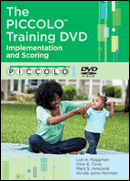I picked the image below because I think something important to calculate in the cost-benefit analysis is that, at least in some cases, the grass is greener on the other side. The assessment of stability, as described in the theory, is meant to analyze if the satisfaction with the current relationship is greater than any profitable alternatives. If there seems to be a better alternative, this means an individual will leave current relationship. However, what happens next?
Because of the changing nature and assessment of relationships, I think the idea of an "oops" moment can actually factor into an individual's greater, or overall, cost-benefit analysis. Have you never heard of a partner who broke up with their significant other and then regretted it or a couple who got back together after taking some time apart? I think this is just one manifestation of the cost-benefit analysis described by the theory.
Although not explicitly discussed in the theory, I wonder more about what factors are involved in shaping an individual's assessments and cost-benefit analysis. How does one weigh viable alternative options? Where is each person's threshold in the cost-benefit before selecting another option? While I recognize this is part of the comparison level, the subjective standard by which these decisions are made, I wonder what generalizations could be drawn, whether based on gender, culture, or other factors which influence an individual's tolerance and perfection in the social exchange process.

